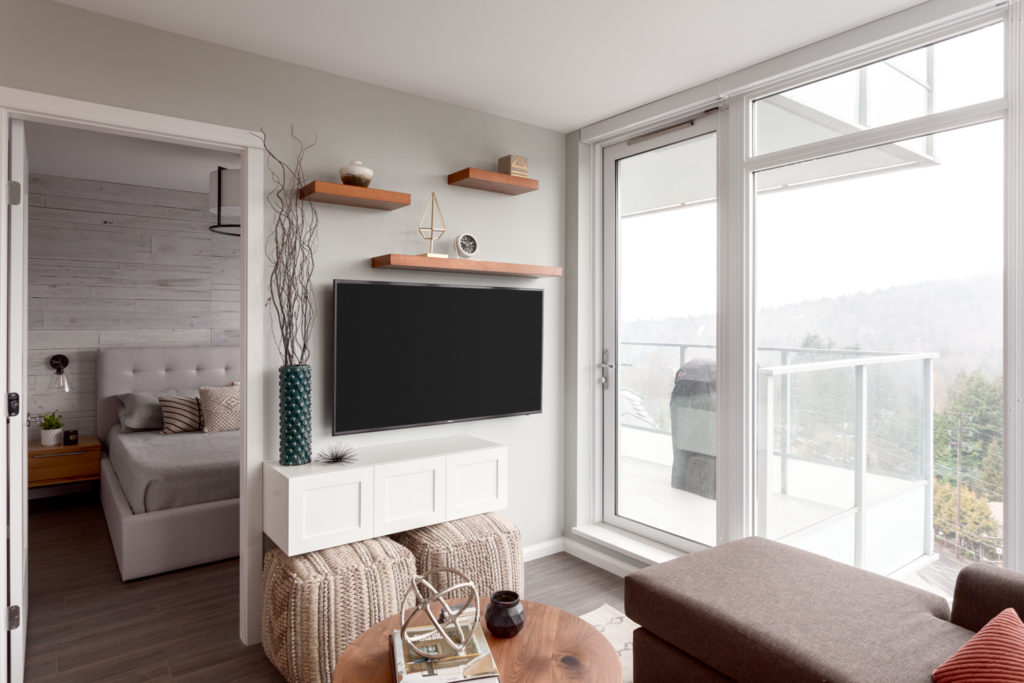If you’ve ever felt confused about the difference between an interior designer and interior decorator you’re not alone. The terms are often incorrectly used or used interchangeably. It happens both within and outside of the design industry however, when I explain the differences most people are happy to learn about the vast differences. It’s not surprising though since these are both highly unregulated industries. That means anyone can call themselves an interior designer, even if they have no formal training. It’s usually a one-sided error because rarely, if ever, would an interior designer refer to themselves as a decorator. So what is the difference? I’ll explain it all.

If I had to pick just one, this would most definitely be the biggest difference between a designer and a decorator. An educated designer learns how to create a structurally safe home for you. A lot of “designers” freely talk about how their instincts for design are more important than what they could learn at school but it can also be a dangerous situation to have an untrained designer working on your project.
INTERIOR DESIGNERS earn accreditation from a school of design and they study for 2-4 years at a post-secondary institution. In particular, their studies focus on:
No amount of natural talent can compensate for knowledge in these important areas of design so always ask your interior designer where he or she went to school before adding them to your team.
INTERIOR DECORATORS can enrol in a program but no formal education is required to become an interior decorator. They study these programs at local colleges. An aspiring decorator could choose to study this part-time or full-time for an accreditation. Their studies include:
Interior decorating programs are completed full-time in 1-2 years. Graduates receive an Interior Decorating diploma.

INTERIOR DESIGNERS can work on both residential or commercial spaces. They can be the most valuable when they’re part of the building team from the ground up. Their knowledge allows them to make critical decisions. As a result, they offer high level input on all aspects of a renovation or new build.
Designers focus on spatial planning. That means once an architect has created the structure the designer steps in to create the interior. Designers complement the entire team because they understand architecture, construction and local building codes.
They are valuable to homeowners because they understand human behaviour and create optimal functionality in a space. If you’ve ever been in a home that felt awkward with tons of unused space you can assume the builder didn’t have a professional interior designer on their team.
Designers are a key player in the planning stages of a renovation or new build. They can create plans for permits, lighting and switch plans and millwork designs.
The most successful projects are ones where the construction team understands the value of the designer. They will often encourage the homeowner to bring their designer to the table early on.
They can also help in budgeting for your renovation of a construction project.
INTERIOR DECORATORS are a great addition to the team after the construction is complete. Specifically when it’s time to think about the softer aspects of a home like window coverings, furniture and textiles.
Decorators focus on helping homeowners with the aesthetics of their home by selecting colour palettes for paint, wallpaper and fabrics.
They can’t make modifications to the structural aspect of a home. They can however use their eye for helping in all the decorative aspects.
Their aesthetic knowledge is valuable to everyone involved. Their talent for including the soft layer to your home is like adding the jewelry on a great outfit. It’s the final touch and it makes everything look pulled together.

INTERIOR DESIGNERS on a residential project are hired to work alongside architects, builders and homeowners. Certainly one of the trades may refer an interior designer but often they are found by homeowners.
Business owners often hire interior designers to work on a commercial project. These types of projects can range from small restaurants and shops to large projects like shopping malls and offices. The work done on these commercial projects is similar to work being executed on residential projects. Most significantly, the difference is that the scope of the project is much larger.
You can imagine why understanding the difference between an interior designer and an interior decorator is crucial. Particularly for something as large and structurally important as a commercial project. This space will later be home to thousands of people so the right person matters.

INTERIOR DECORATORS are typically hired by the homeowner to help with the furniture selection and layout. This could be either at the end of a renovation or as a stand-alone service. It’s common for a homeowner to feel satisfied with the layout of their space but wanting to update their furniture and decor.
Another popular employment opportunity for an interior decorator is furniture and home decor retail stores. An example is your local furniture stores that offer in-home consultations where decorators are a valuable part of that process.
They can advise on the correct sizing for furniture and rugs. Additionally, they’ll be able to present layout options for furniture.
I hope you found that to be a helpful education in the differences between these two very different services. I know it’s a surprise to most people to learn about this. Hopefully now your newfound understanding will prevent costly mistakes from happening in the future.
If you want to learn more about how I can help you with any of your interior design projects I have my full design process laid out on my website.